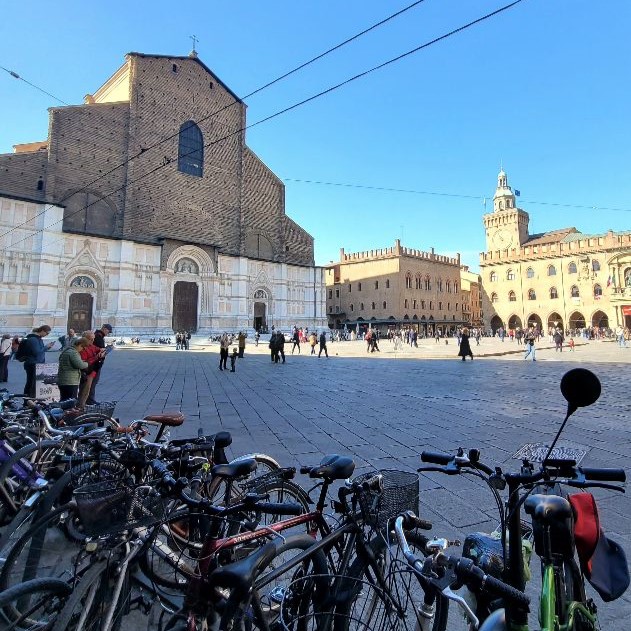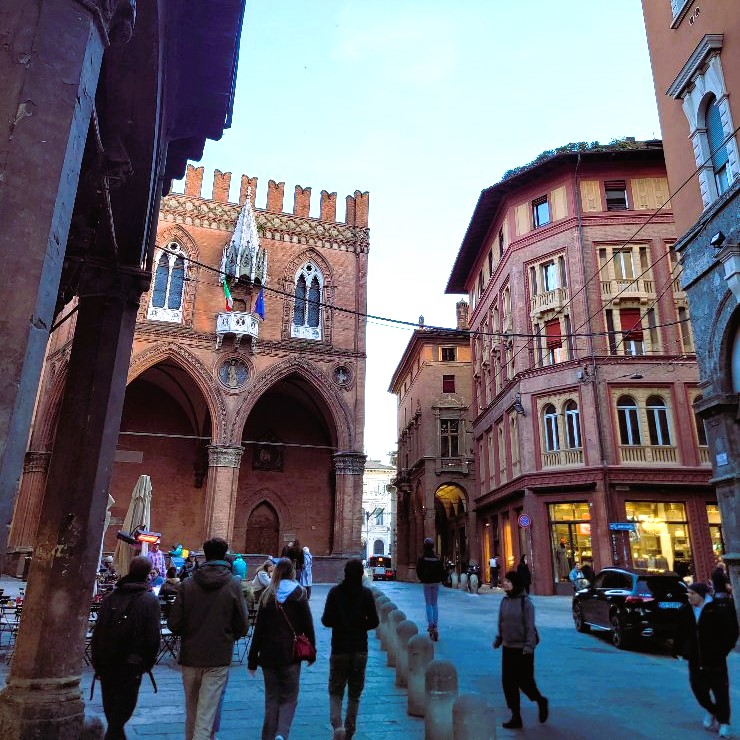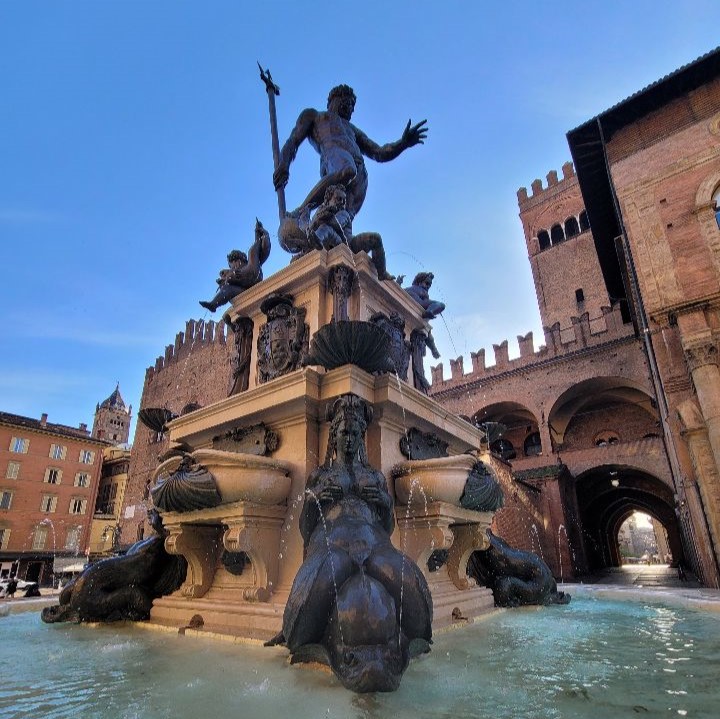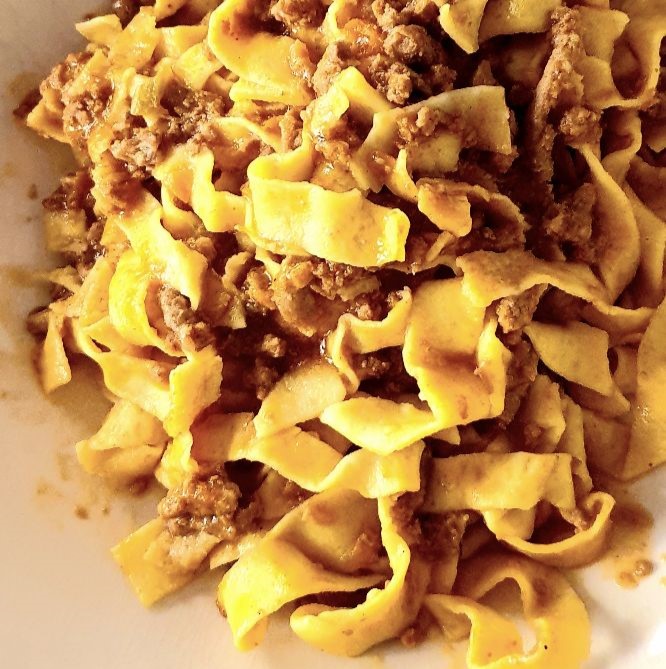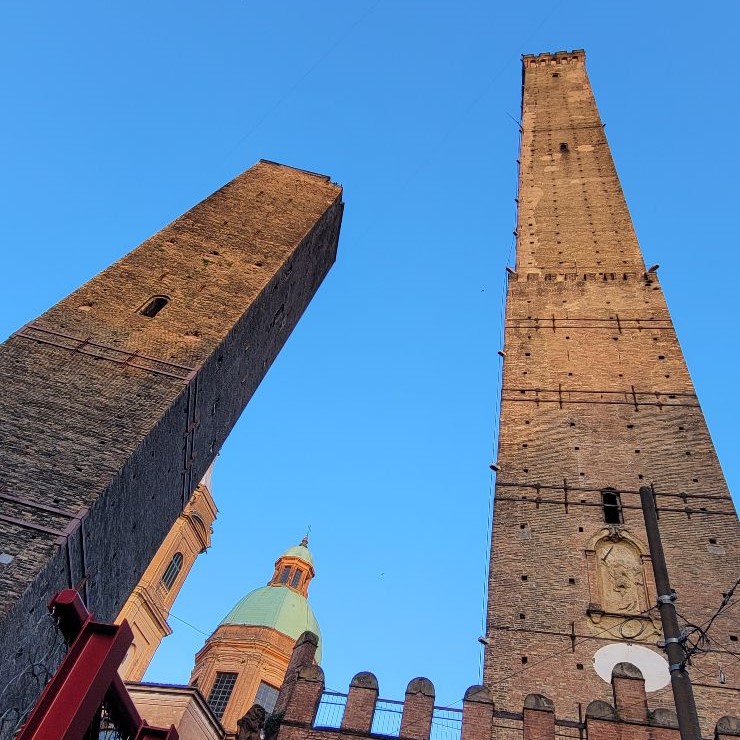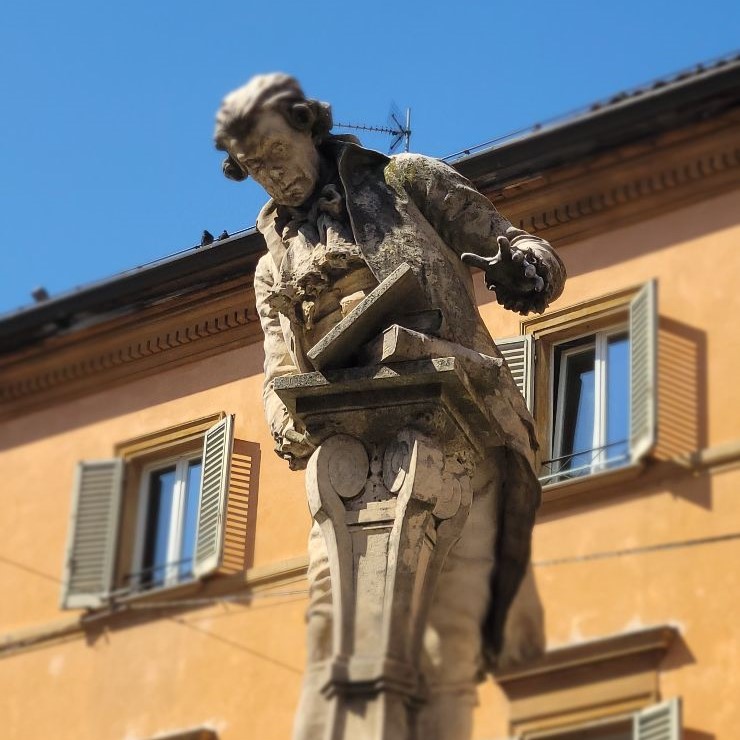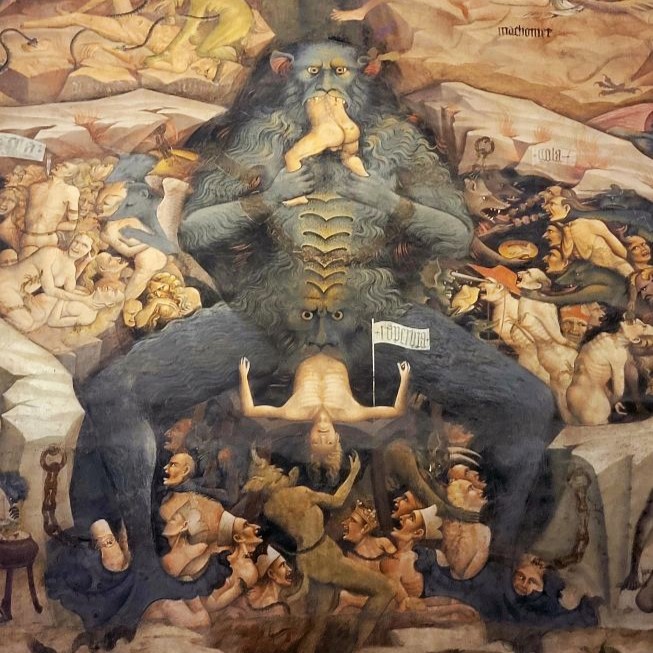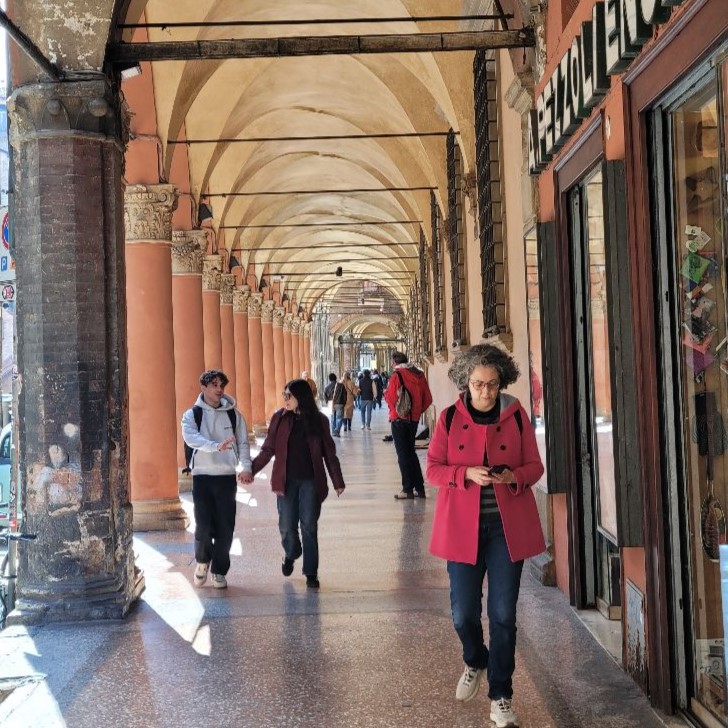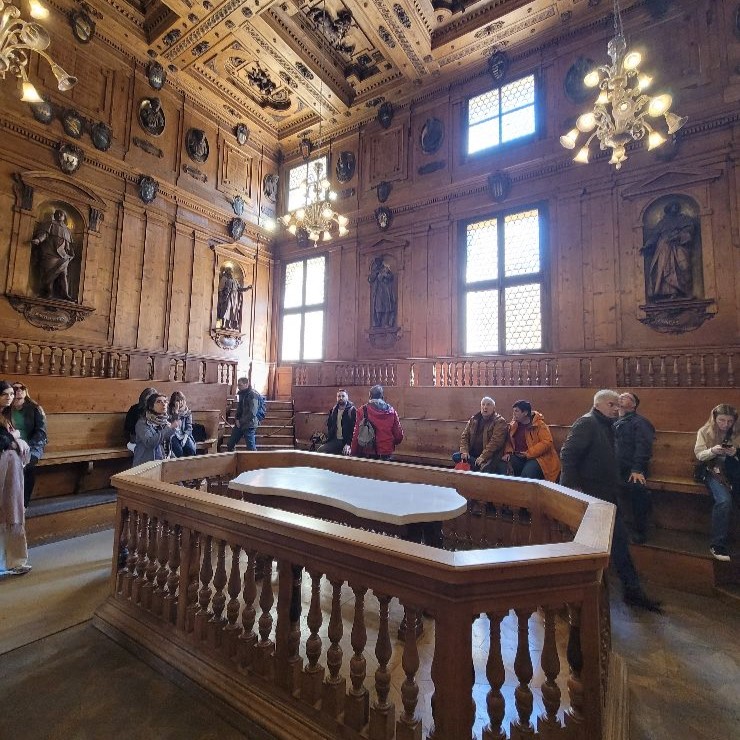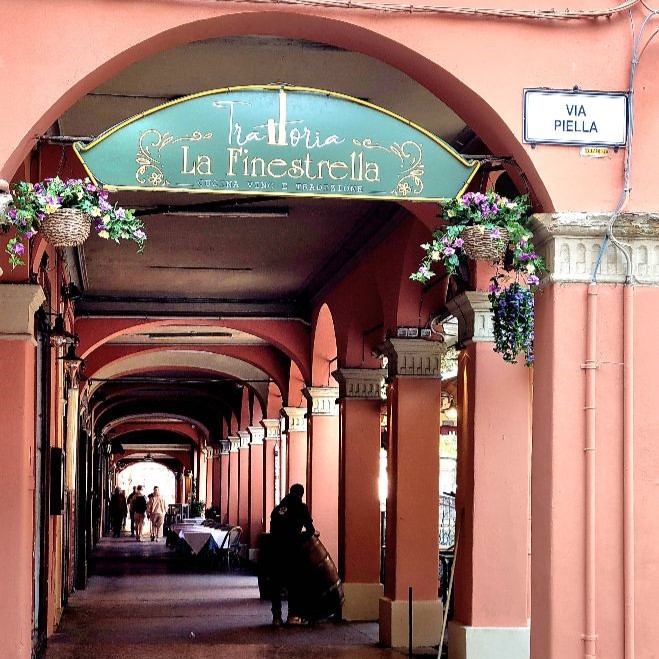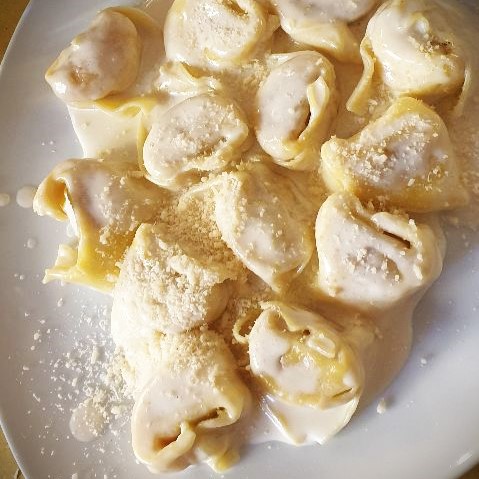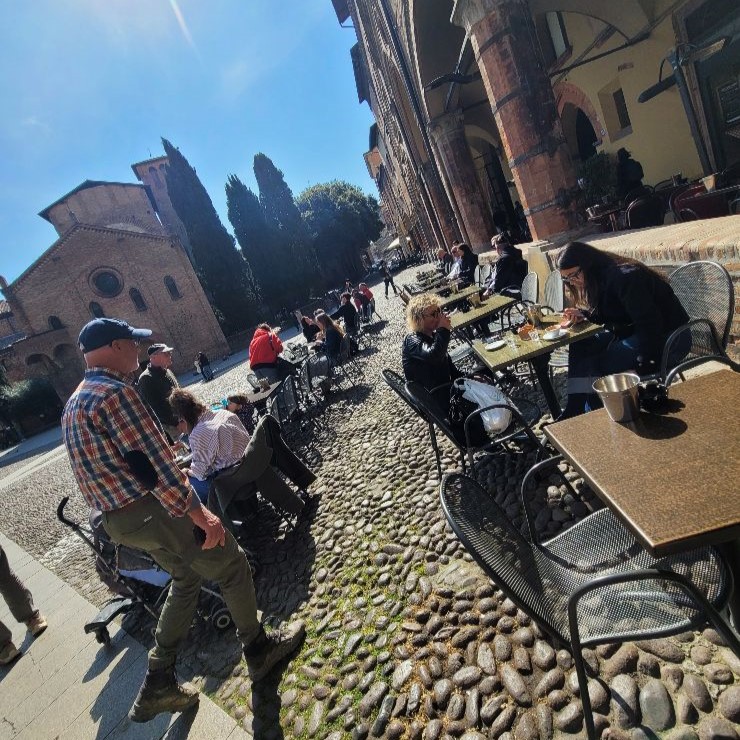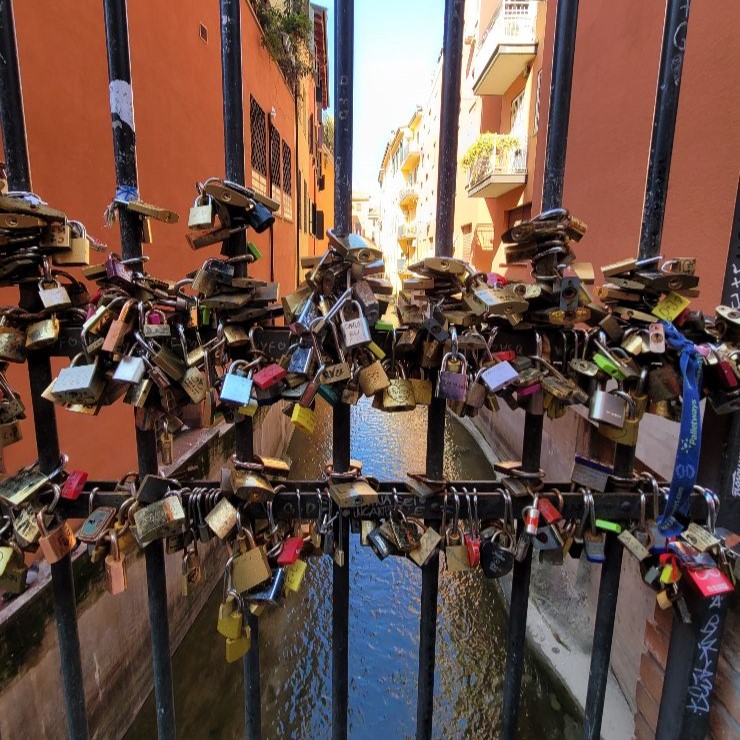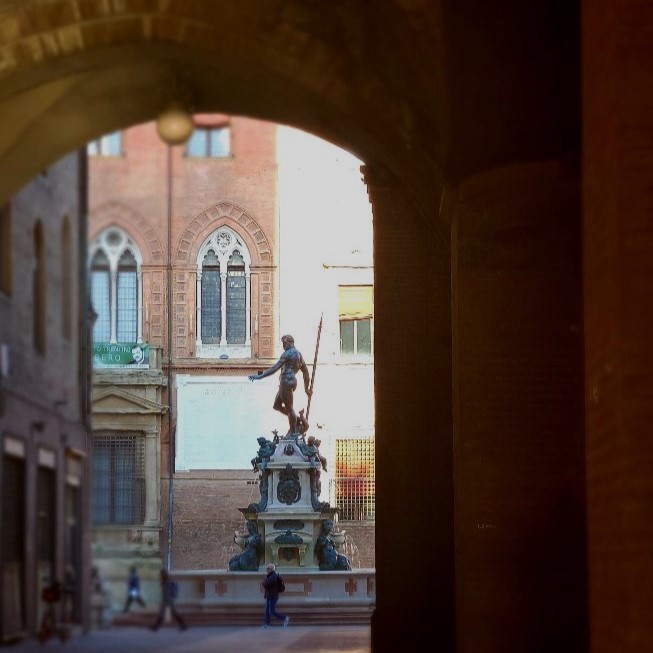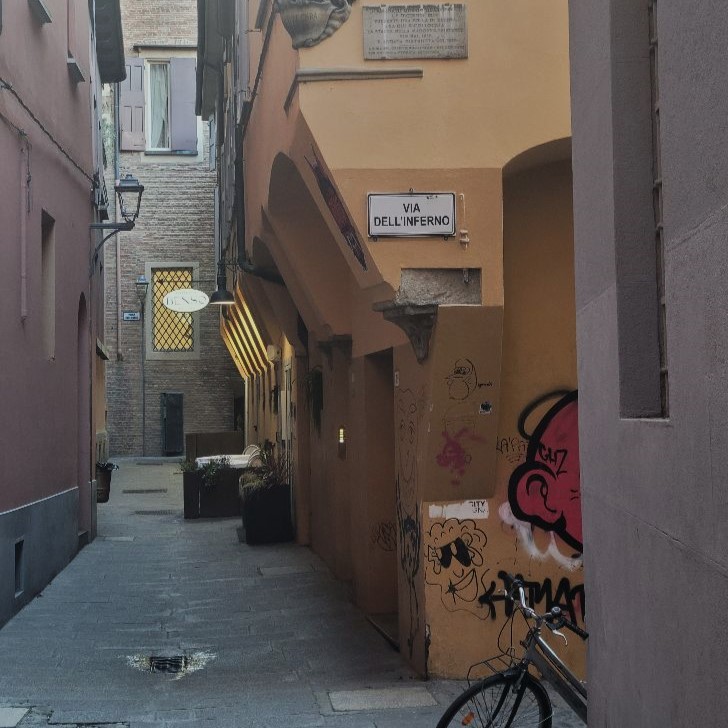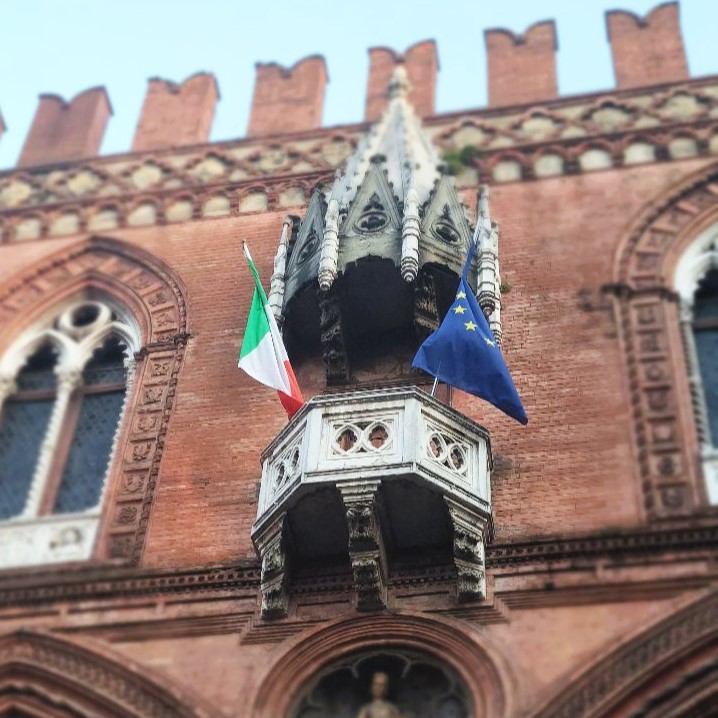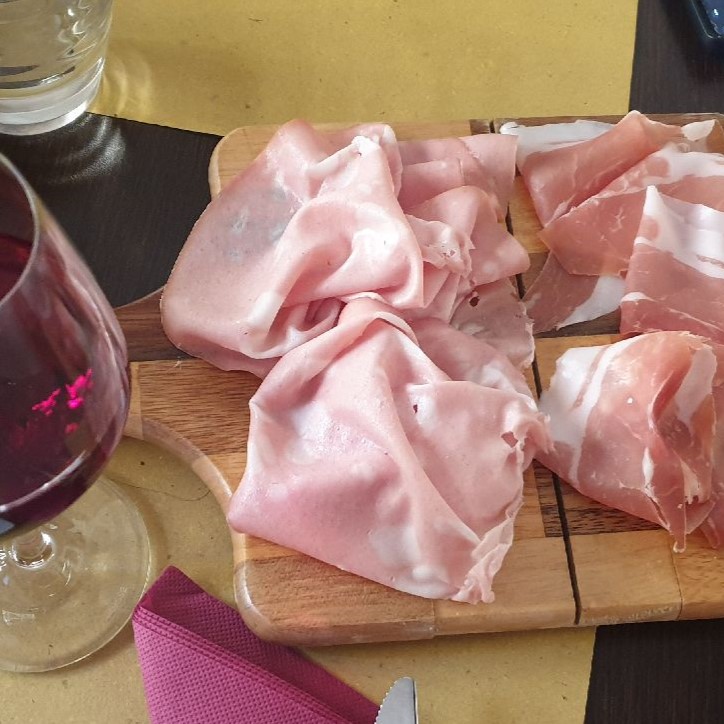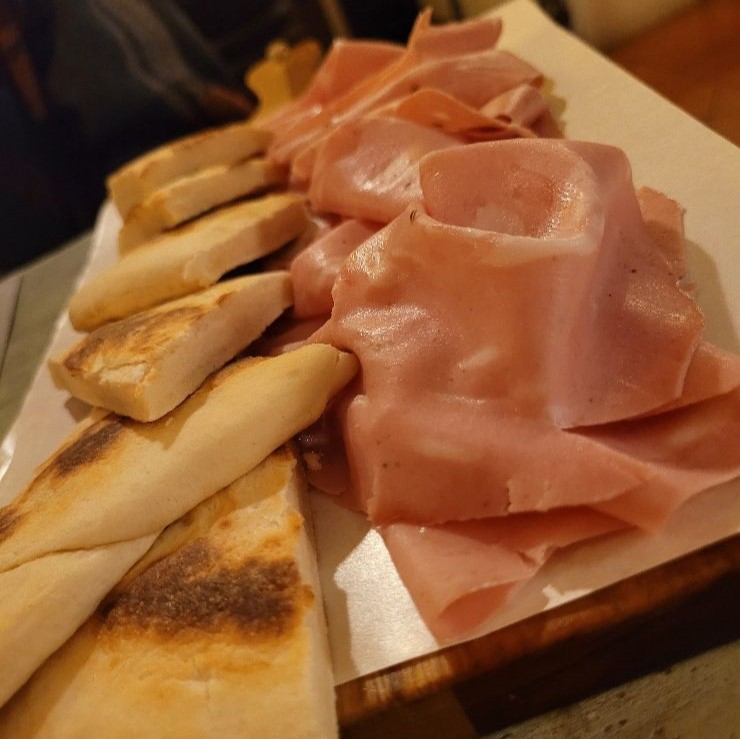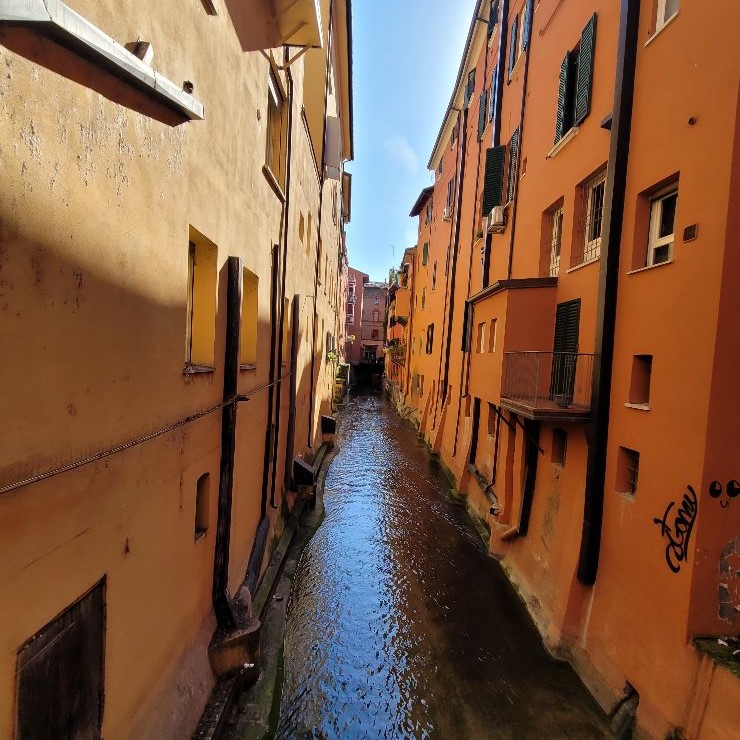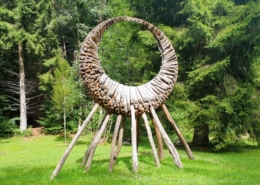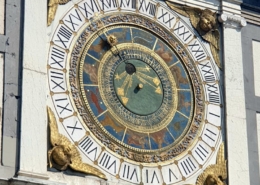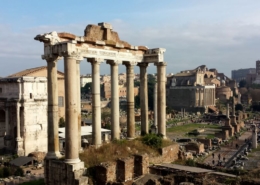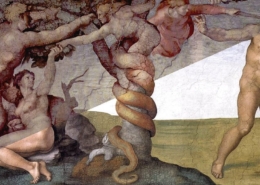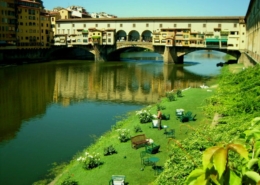Highlights of this tour
- San Petronio church with the Bolognini Chapel
- Archiginnasio with Anatomic Theater
- Quadrilatero, the Medieval food market
- Traditional Bolognese food tasting
- The UNESCO porticos and their history
- Palazzo Municipale & Salaborsa
- Santo Stefano complex
UNDER THE BOLOGNESE PORTICOS – BOLOGNA ART, HISTORY, FOOD
UNDER THE BOLOGNESE PORTICOS – BOLOGNA ART, HISTORY, FOOD
Discover this quintessentially Italian city, whose landmarks are: an almost millenary – still very important and active – university; two – unlike Pisa – badly leaning and uneven medieval towers, and the most delicious, and fattening, Italian food! Not exactly vegan-friendly cuisine.
No need to say that, as all most important Italian cities, Bologna can boast a considerable number of treasures-filled churches, enchanting piazzas, sumptuous palaces, scenic fountains. Compared to Venice, Florence, and Rome, there are perhaps less overwhelming ‘must-sees’. And this so far protects the city from overtourism, we don’t know for how long.
Bologna’s very special frame, the element which characterizes the urban scene are the porticos: those stylistically varied arcaded streets, born in the Middle Ages as an illegal solution to make room for the booming students’ population, then regulated by the law, and, since 2021, acknowledged by UNESCO as World’s Heritage Sites (at least twelve of them).
The embracing effect of 35 miles of arcades, where you always feel cocooned, epitomizes the warm feeling of hospitality and good living intrinsic to the Bolognese. On top, consider that the dominating colors of the facades range from red to yellow, adding extra vibrancy to the city.
Bologna, easy to reach from Milan, Venice, Florence, or Rome, as it is the most important railways cross of Italy, is at its best during the mid-seasons, as it tends to be very hot in summer, and rather foggy in winter. Also, mild temperatures will allow you to indulge more on mortadella, tortellini, tagliatelle, red wines, and all the other celebrated gastronomic delights.
Piazza Maggiore, heart of town, a huge, car-free space with an intense medieval atmosphere, has been the theater of all important civic and religious events throughout the centuries. You’ll learn about King Enzo and the palace where he was kept in prison for many years. Your guide will provide a good historical introduction to the long and successful life of the city while pointing out the glorious Palazzo del Podestà, Palazzo Comunale, Palazzo dei Banchi.
The tour continues with a visit to the gigantic late Gothic Basilica di San Petronio. Ask your guide to tell the story of the ‘politically incorrect’ insertion into the splendid Final Judgement fresco depicted by Giovanni da Modena for the Bolognini Chapel in the early 15th century. Admire the Meridian Line (17th century), a highly accurate sundial created by astronomer Gian Domenico Cassini. Learn about the many historical events that took place in the church.
Glory of the Piazza and emblem of Bologna is the scenic Fontana del Nettuno. Completed in 1566, is one of the most recognizable landmarks of Bologna, this spectacular fountain was often at the center of curious episodes, and also inspired legends, such as the one concerning Neptune’s genitals…ask your guide for more!
After a glimpse into Corte Galluzzi, a well-preserved medieval courtyard, we enter the Archiginnasio, seat of Bologna’s University (Alma Mater) from 1563 until 1803. The inner walls and vaults are covered with decorated shields and inscriptions commemorating the hundreds of alumni – including some very famous, from Petrarch and Dante to Copernicus, Leon Battista Alberti, Thomas Becket, Erasmus of Rotterdam, Luigi Galvani, and many more.
Not to be missed is the Anatomical Theater, erected by Pope Pius IV in the second half of the 16th century, when the idea of learning anatomy through live dissections was still a novelty. The room, lined with spruce wood and lavishly decorated, was heavily bombed during WWII.
To complete the art and history-centered part of our morning tour, we stroll to the Garisenda and Asinelli Towers, which stand like two lost giraffes on the middle of the town. Built by two rival families, with their over 900 years of life, the Towers are at the center of many anecdotes and superstitions. Now (summer 2025) the whole area is undergoing static restorations. Your guide will summon up the times in which Bologna had 100 towers (24 still standing), which had first of all military purposes, but also acted as status symbols for the great families.
Not far from the two Towers stands the elegant and eclectic Palazzo della Mercanzia, the seat of merchants’ activities controls since the late 14th century. This is another architectural gem that was rescued from WWII bombs. We are now entering the so-called ‘Quadrilateral’, an attractive grid of narrow alleyways of ancient Roman origins, heart of Bologna’s heart. This bustling medieval food market, with its gothic wooden arcades and evocative street names is telling us that the moment to relax, sit down and savor Bologna’s cuisine has finally arrived.
Bologna’s gastronomic scene ranges from the ubiquitous ‘mortadella’ to the inviting ‘tortellini’. The irresistible ‘tortelloni’, and the unmissable ‘tagliolini’ with Bolognese style ragu’ , from the green ‘lasagna’ to parmesan cheese and balsamic vinegar, washed down by local wines, such as Sangiovese and Pignoletto. If you have a penchant for sweet treats, don’t miss the ‘zuppa inglese’! There’s, of course, much more. Your guide will tell you about ‘balanzoni’, ‘crescentine’, ‘gramigna alla salsiccia’, ‘passatelli’, ‘squacquerone’ cheese, Parma ham…
After all this hearty food we continue UNDER THE BOLOGNESE PORTICOS, trying to burn out some calories: back Piazza Maggiore we enter Palazzo Comunale (Palazzo d’Accursio)to admire two outstanding rooms: Sala Farnese and Cappella del Legato, that will provide inspiration to talk about Bologna’s historical and civic development throughout the centuries.
We also spend some time inside Sala Borsa, today Multimedial Library: a fascinating covered piazza, under whose crystal floor we can admire Bologna’s Etruscan and Roman ruins.
Dulcis in fundo: after a brief stroll under the porticos, pulsating with Bologna’s everyday life, our final stop will be the Complex of Santo Stefano, also known as the ‘Seven Churches’, an uncommon – and enchanting – example of Romanesque architecture starring four interconnected churches, each with its own unique historical and architectural significance. A place of uncanny beauty and calm that will be a perfect conclusion for our day in Bologna.
Cost of this tour
- This tour lasts six hours and costs 420 euros up to six people (not per person).
- Only private parties.
- For larger parties send us an email!
- Entrance fees per person: Cappella Bolognini inside San Petronio 5 euro to be paid on the spot, Anatomic Theather 5 euro with pre-booking, Santo Stefanom complex 5 euro to be paid on the spot.
Dress Code and advice
- Short sleeves and knee high skirts/pants ok
- No sleeveless garments, no shorts.

